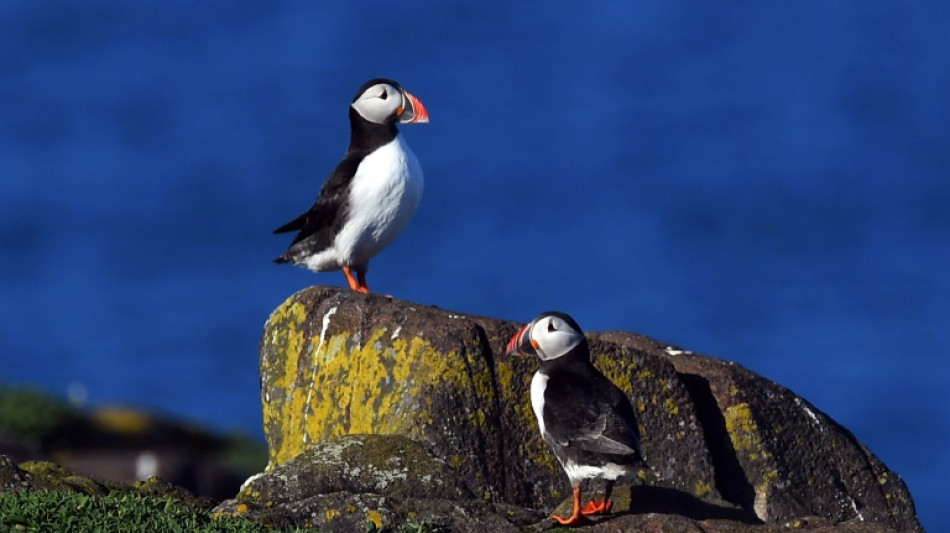
-
 Rybakina outguns world No.1 Sabalenka to win WTA Finals
Rybakina outguns world No.1 Sabalenka to win WTA Finals
-
Norris survives a slip to seize Sao Paulo pole

-
 Sunderland snap Arsenal's winning run in Premier League title twist
Sunderland snap Arsenal's winning run in Premier League title twist
-
England see off Fiji to make it nine wins in a row

-
 Australia connection gives Italy stunning win over Wallabies
Australia connection gives Italy stunning win over Wallabies
-
Arsenal winning run ends in Sunderland draw, De Ligt rescues Man Utd

-
 Griezmann double earns Atletico battling win over Levante
Griezmann double earns Atletico battling win over Levante
-
Title-leader Norris grabs Sao Paulo Grand Prix pole

-
 Djokovic edges Musetti to win 101st career title in Athens
Djokovic edges Musetti to win 101st career title in Athens
-
Rybakina downs world No.1 Sabalenka to win WTA Finals

-
 McKenzie ends Scotland dream of first win over New Zealand
McKenzie ends Scotland dream of first win over New Zealand
-
McKenzie stars as New Zealand inflict heartbreak upon Scotland

-
 De Ligt rescues Man Utd in Spurs draw, Arsenal aim to extend lead
De Ligt rescues Man Utd in Spurs draw, Arsenal aim to extend lead
-
Kane saves Bayern but record streak ends at Union

-
 Bolivia's new president takes over, inherits economic mess
Bolivia's new president takes over, inherits economic mess
-
Edwards set for Wolves job after Middlesbrough allow talks

-
 COP30: Indigenous peoples vital to humanity's future, Brazilian minister tells AFP
COP30: Indigenous peoples vital to humanity's future, Brazilian minister tells AFP
-
Marquez wins Portuguese MotoGP sprint race

-
 Saim, Abrar star in Pakistan's ODI series win over South Africa
Saim, Abrar star in Pakistan's ODI series win over South Africa
-
Norris extends title lead in Sao Paulo GP sprint after Piastri spin

-
 Man Utd have room to 'grow', says Amorim after Spurs setback
Man Utd have room to 'grow', says Amorim after Spurs setback
-
Tornado kills six, wrecks town in Brazil

-
 Norris wins Sao Paulo GP sprint, Piastri spins out
Norris wins Sao Paulo GP sprint, Piastri spins out
-
Ireland scramble to scrappy win over Japan

-
 De Ligt rescues draw for Man Utd after Tottenham turnaround
De Ligt rescues draw for Man Utd after Tottenham turnaround
-
Israel identifies latest hostage body, as families await five more

-
 England's Rai takes one-shot lead into Abu Dhabi final round
England's Rai takes one-shot lead into Abu Dhabi final round
-
Tornado kills five, injures more than 400 in Brazil

-
 UPS, FedEx ground MD-11 cargo planes after deadly crash
UPS, FedEx ground MD-11 cargo planes after deadly crash
-
Luis Enrique not rushing to recruit despite key PSG trio's absence

-
 Flick demands more Barca 'fight' amid injury crisis
Flick demands more Barca 'fight' amid injury crisis
-
Israel names latest hostage body, as families await five more

-
 Title-chasing Evans cuts gap on Ogier at Rally Japan
Title-chasing Evans cuts gap on Ogier at Rally Japan
-
Russian attack hits Ukraine energy infrastructure: Kyiv

-
 Kagiyama tunes up for Olympics with NHK Trophy win
Kagiyama tunes up for Olympics with NHK Trophy win
-
Indonesia probes student after nearly 100 hurt in school blasts

-
 UPS grounds its MD-11 cargo planes after deadly crash
UPS grounds its MD-11 cargo planes after deadly crash
-
Taliban govt says Pakistan ceasefire to hold, despite talks failing

-
 Trump says no US officials to attend G20 in South Africa
Trump says no US officials to attend G20 in South Africa
-
Philippines halts search for typhoon dead as huge new storm nears

-
 Bucks launch NBA Cup title defense with win over Bulls
Bucks launch NBA Cup title defense with win over Bulls
-
Chinese ship scouts deep-ocean floor in South Pacific

-
 Taiwan badminton star Tai Tzu-ying announces retirement
Taiwan badminton star Tai Tzu-ying announces retirement
-
New York City beat Charlotte 3-1 to advance in MLS Cup playoffs

-
 'Almost every day': Japan battles spike in bear attacks
'Almost every day': Japan battles spike in bear attacks
-
MLS Revolution name Mitrovic as new head coach

-
 Trump gives Hungary's Orban one-year Russia oil sanctions reprieve
Trump gives Hungary's Orban one-year Russia oil sanctions reprieve
-
Owners of collapsed Dominican nightclub formally charged

-
 US accuses Iran in plot to kill Israeli ambassador in Mexico
US accuses Iran in plot to kill Israeli ambassador in Mexico
-
Watch the Marijuana Federal Action, Not the Speak: President Trump's Cannabis Decision Soon


Decline in North Sea puffins causes concern
The Isle of May, off Scotland's east coast, is home to one of the UK's biggest colonies of seabirds. Some 200,000 birds, from kittiwakes to guillemots can flock to the rocky outcrop at the height of the breeding season.
But conservationists are concerned about dwindling numbers of one of the island's most distinctive visitors -- the Atlantic puffin.
"The population was really booming in the 80s and 90s and then suddenly, a crash," David Steel, a manager at the nature reserve, told AFP.
"We lost nearly 30 percent of all puffins in the mid-2000s and since then the population has slowly increased but nothing compared to what it used to be."
Just over 50 miles (80 kilometres) down the coast on the Farne Islands, off Northumberland in northeast England, there are similar concerns.
In both places, global warming, high winds, rains, coastal erosion, pollution and overfishing of its favoured food -- sand eels -- is being blamed for dwindling numbers.
"Climate change is having a big effect with prey items in the sea," affecting sand eels which feed on plankton in the North Sea, said Steel.
"The plankton is moving north as the sea temperature increases. So if there are less sand eels the puffins are going to struggle."
- Census -
On a meadow on one of the Farne Islands, rangers slowly slide their arms into narrow sandy burrows, searching for signs of nesting pairs of puffins, which are known locally as "tommy noddies".
"Quite often you will get a bit of a nip, which is a good sign because it means then that the burrow is occupied," said one of the rangers, Rosie Parsons.
In 2015, the International Union for the Conservation of Nature gave puffins "vulnerable" status, after large declines over much of their European range.
Rising sea temperatures have caused sand eels to move north to cooler waters, forcing the birds to follow but where more extreme weather can be fatal for them.
The traditional enemies of puffins, which grow to just under 30 centimetres (one foot) tall and weigh around 450 grams (around a pound), are seagulls and seals.
Puffins mate for life and lay a single egg in April or May.
Due to their low reproductive rate, populations can take decades to recover from a sudden knock.
A full puffin census is being carried out on the Farne Islands and the Isle of May this year.
Concerns were raised last year when a limited count recorded 36,211 breeding pairs across four of the Farne Islands compared to 42,474 pairs in 2018.
Puffin numbers on the islands peaked at 55,674 pairs in 2003 before a sudden crash to 36,835 in 2008 a due to an extremely low number of sand eels.
Zoologist Richard Bevan, from Newcastle University, hopes the resumed annual count will provide a more accurate estimate of puffins on the islands.
"Up until 2018 surveys were done on the Farnes every five years, which means you don't know what's happening in the four years in between," he told AFP.
Before 2018, teams of researchers would check every burrow they came across on an island and form an estimate from that.
The university then found a way to subsample to form an accurate estimate of the population. This has sped up the count and made the task far less arduous.
- Concern -
Measuring puffin numbers is difficult, said Bevan.
Sometimes it will be easy to spot one of the birds, returning to nests with a sand eel clamped in its beak, but puffins are often underground.
"Often the only way to do it is to stick your arm into a burrow and check," he said.
The 2022 census will give scientists a picture of how the puffin population is being affected by factors such as climate change and local changes in sand eel availability, Bevan says.
"Looking at the data, it is worrying to see that over the last four years we have seen a downward trend," he says.
"However, these are data for a short time period and compared to the population counts in the early 1990s they are still reasonable numbers."
Although there is not an immediate danger of the puffins becoming extinct, the fact that their numbers are falling "triggers concern".
"With a declining population you have to keep your eye on it to make sure that doesn't continue," he said.
"If it does continue we have to be aware of the factors that contribute to it and how we can ameliorate those."
P.Mathewson--AMWN


